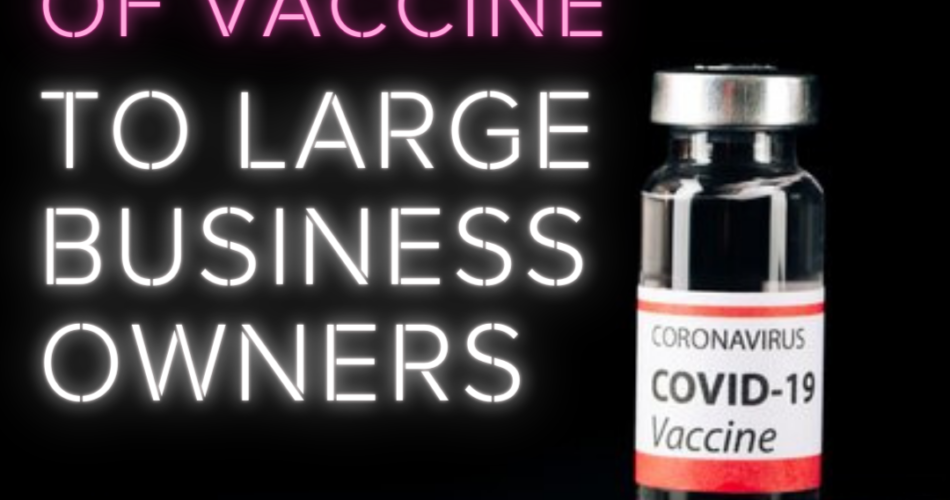With various COVID-19 vaccines approved for use around the world and mass immunization efforts ramping up, there is growing hope for a possible return to normalcy in the coming months.
Vaccine makers continue to increase capacity, increasing accessible supply to countries with negotiated volume obligations. Vaccination remains a vital strategy in the fight against the COVID-19 pandemic, according to public-health officials around the world.
Large industries, public health agencies, and employers working together can promote transparency regarding data, the allocation process, and vaccine efficacy while creating trust and confidence in the process and safety of the vaccine.
In this post, we’ll try to provide clarity to large firms that want to assist their return-to-work initiatives while also hastening the path to societal and economic recovery by encouraging COVID-19 vaccine use.
Table of Contents
How Large Companies Encourage Vaccination
Understand Your Population And Pay Attention To Inequities
Spend time learning about the cultural beliefs that may prevent employees from getting vaccinated. Engage your diversity, equity, and inclusion professionals to reach out to all demographics in your employee base, and conduct surveys right away to learn about employees’ attitudes and beliefs about vaccination.
This data will assist you in developing a more targeted education and engagement strategy that makes use of existing public health materials. Once you’ve established a baseline, you can continue to conduct pulse surveys of your workforce in the coming months to see what’s changed and how to best target interventions.
Make It A Neighbor hood Thing
To foster trust, personalized communications will be essential. Employers should also try to identify the right parties and channels in the company and the local community to deliver those messages to each sub group, either in collaboration with or in parallel with public health officials. Leaders can lead by publicly supporting vaccinations and, if eligible, getting vaccinated themselves.
Employees Are Interested In Paid Time Off For Vaccination And Recovery
Paid time off (PTO) for vaccination and the recovery period following vaccination was the most influential action highlighted in our survey. This is under one of the most common reasons for vaccination concern: possible adverse effects. Employees say they want assurances that they will be able to take time off to recover from any potential vaccine side effects without incurring additional financial costs.
Costlessness
While the majority of governments are purchasing COVID-19 vaccines directly for their citizens, consumers may face financial barriers during the vaccination process. For example, lost wages from time away from work and transportation costs may sway their decision to get the vaccine.
Educate While Remaining Open
Create an engaging program to educate your employees and customers on the goals, safety, and benefits of vaccination. Provide current information and be open about access issues and other concerns. To respond to changing local conditions, messaging must be agile and delivered in a nuanced, culturally sensitive manner.
Increased Proximity
Vaccination clinics for COVID-19 have been set up by health care systems all over the world. Other employers may consider offering on-site vaccination clinics for their employees as eligibility criteria expand, increasing system capacity to deliver vaccines and thus helping to accelerate vaccine rollout.
This impact can be amplified by expanding the reach of vaccination clinics to include eligible family members of employees as well as members of the local community. Having an off-site location for the clinic, depending on local eligibility and reopening criteria, can be a viable option for providing vaccines to remote-working employees without jeopardizing the safety of critical on-site personnel.
Remove Roadblocks And Reward Positive Behavior
Recognize the difficulties faced by employees who have children, and make vaccinations available at times that are both convenient and feasible. You could offer child care options. You could start an on-campus vaccination site once vaccines become more widely available.
If your employees are getting a vaccine that requires a second dose ,teach them the importance of getting both doses and offer incentives to do so through your employee recognition and rewards programs.
Returning To Work After Vaccinations And Navigating The Workplace
Employers must take steps to develop their viewpoint and approach to COVID-19 immunization of their employees as soon as possible. The following are possible key steps
● Continuing to monitor employee eligibility, including phases and timing, may become much easier in the coming weeks as many jurisdictions plan to extend eligibility to everyone.
● Evaluating action options in the context of the low investment business articles, for example, based on specific barriers to adoption for the workforce and employers’ scale and resourcing to pursue various actions.
● forming a cross-functional team with an empowered leader. For example, HR, legal, and key business unit and site managers to drive employee vaccination planning and action.
● Collaborating with local public-health leaders to ensure complementary, consistent, and well-coordinated actions.
● Obtaining feedback from the workforce, evaluating the effectiveness of various initiatives, and making necessary adjustments.
Companies may want to integrate vaccination planning and implementation with broader efforts to protect workers and get them back to work safely over time. If this is the case, employers must devise a strategy for operationally managing variation in vaccination status among employees.
Final Words
While great work has been achieved in hastening the development and distribution of COVID-19 vaccinations to countries throughout the world, the ultimate barrier to consumer adoption remains.
Employers are ideally positioned to assist vaccine adoption, and they may do so by instilling belief and making immunization as easy and inexpensive for employees as feasible.
Taking the initiatives we’ve outlined will pay rewards both now, by putting people back to work faster and rebuilding our economy, and later, by laying the groundwork for future problems.
The employer should consider beyond vaccination. Employers should assess in-person health procedures, meeting and cooperation norms, work-from-home setup and protocols, and travel rules in addition to encouraging vaccine adoption.
Tagged in:
america ukraine russia, american business news, best business blogs 2022, business, business blog, current business related news, entrepreneur, latest business blog ideas, latest usa business blogs, low investment business articles, russia versus nato america, startup business strategy usa, ukraine russia crisis



